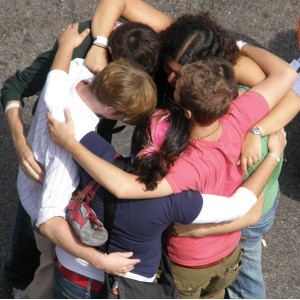“It was so helpful to be in a group where people weren’t in a hurry for me to get better.”
“What a relief to have this time each week when I didn’t feel like I needed to get over it.”
These were the two most frequent responses when I asked students to talk about what had been the most helpful part of the Grief Group. I had the privilege of leading such a group each semester at the university. Most were scared when they began the group. They were members of the group because each had experienced the death of a family member or a close friend within the past year.
Most had serious reservations about opening up to a bunch of strangers about something as painful as the death of a loved one. But most of them were also desperate to find some way to talk, to unload, to get some support. Grief can be lonely. Most wondered how anyone could understand their situation.
After spending two hours together each week for six weeks, members of the group had found something valuable. They had held onto each other for dear life, they had laughed, cried, told their stories, and had learned a lot from each other. But with few exceptions, the two statements summed up the true value of the experience. They had time and company.
 Group members found comfort and strength in being allowed to be right where they were in their pain and suffering. Outside the group, in their residence halls, classes, apartments, friendships, they felt the need to act as if they were not in as much pain as they really were. They fought back their tears, kept their thoughts and their stories to themselves, and pretended that what had shaken their lives to the core had not really affected them that much. But in that group room, with those people, they each had time and company. There was no hurry and there was no formula.
Group members found comfort and strength in being allowed to be right where they were in their pain and suffering. Outside the group, in their residence halls, classes, apartments, friendships, they felt the need to act as if they were not in as much pain as they really were. They fought back their tears, kept their thoughts and their stories to themselves, and pretended that what had shaken their lives to the core had not really affected them that much. But in that group room, with those people, they each had time and company. There was no hurry and there was no formula.
What a relief to be in the company of people where they could be in legitimate pain, they could shed tears as they came, and they could be angry that the rest of the world just went on as usual, as if their loved one had not died.
Grief is normal, but it’s painful. It cuts deeply into every part of our lives. It can leave our emotional, cognitive, physiological, spiritual, and relational landscape in ruins.
Just as every relationship is unique, every loss of a relationship is unique. While there are some common features in grief, one approach to grieving does not fit all. Group members found comfort in identifying their common experiences; confirmation that no one was going crazy. Equally important was support for the uniqueness of each person’s experience.
 Grief is a process, not an event. In the group, we repeated as often as needed that the goal of grief is not to “move on” or to “get over it.” It is not to forget the person who has died or even to stop feeling the pain of their loss. The goal of grieving is to move into and through the pain, to experience the important and necessary changes brought about by the person’s death. When that happens, then and only then can we gradually reinvest in the many other parts of life while still acknowledging the space left empty by the person who has died.
Grief is a process, not an event. In the group, we repeated as often as needed that the goal of grief is not to “move on” or to “get over it.” It is not to forget the person who has died or even to stop feeling the pain of their loss. The goal of grieving is to move into and through the pain, to experience the important and necessary changes brought about by the person’s death. When that happens, then and only then can we gradually reinvest in the many other parts of life while still acknowledging the space left empty by the person who has died.
In fact, grief does not end. Once we lose someone we love, we will always have an empty space for that person. But our grief will not always be so intense and painful, and eventually the grief will become a part of who we are and what’s normal for us. A book several years ago had the title, Life is Hello, Life is Good-bye. Grief becomes a part of life as we know it.
But while in pain, give yourself the gifts of time and company.
0 Comments until now
Add your Comment!